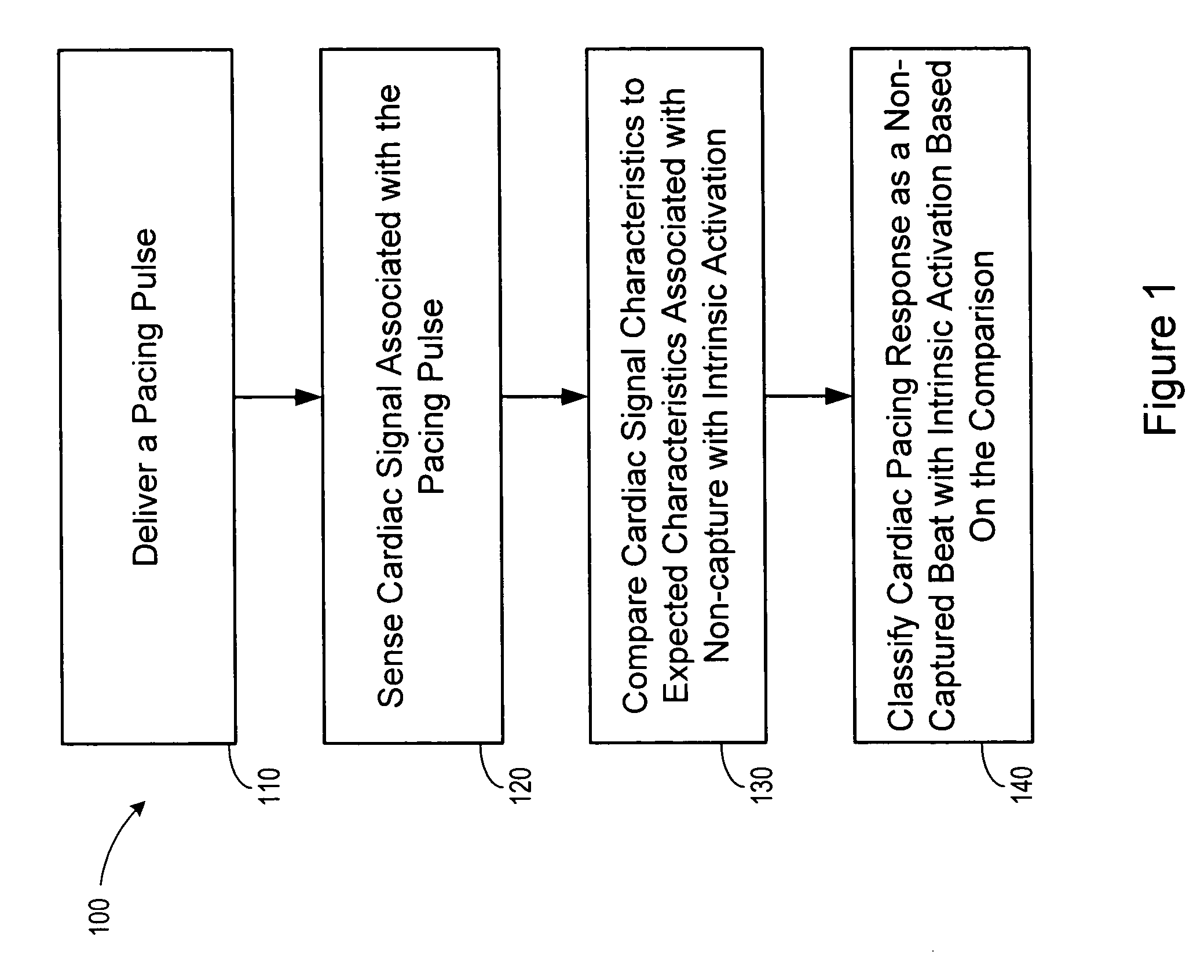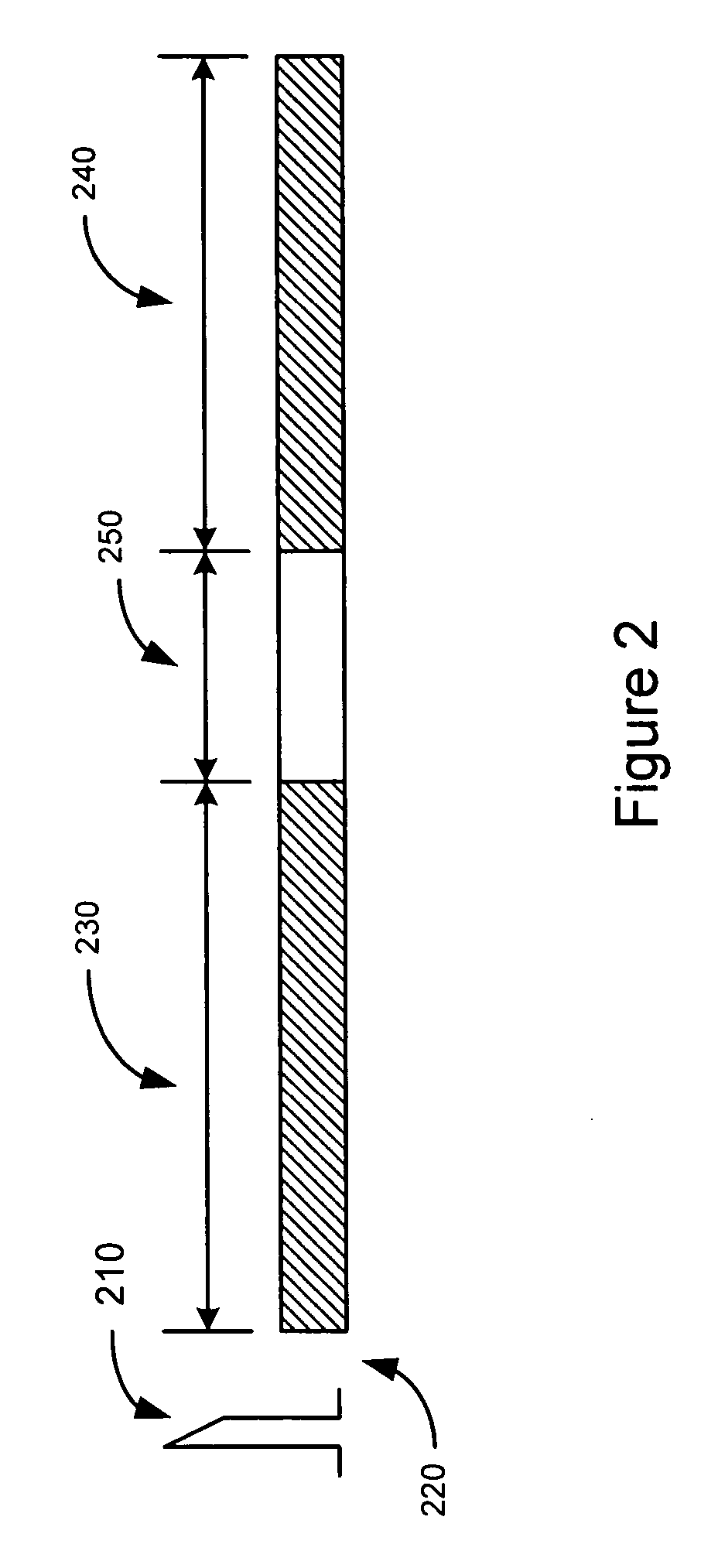Non-captured intrinsic discrimination in cardiac pacing response classification
a non-captured intrinsic discrimination and cardiac pacing technology, applied in the field of implantable medical devices, can solve the problems of ineffective pacing, discomfort, and reduced pumping efficiency
- Summary
- Abstract
- Description
- Claims
- Application Information
AI Technical Summary
Benefits of technology
Problems solved by technology
Method used
Image
Examples
Embodiment Construction
[0024] In the following description of the illustrated embodiments, references are made to the accompanying drawings forming a part hereof, and in which are shown by way of illustration, various embodiments by which the invention may be practiced. It is to be understood that other embodiments may be utilized, and structural and functional changes may be made without departing from the scope of the present invention.
[0025] Cardiac response classification may be implemented by a pacemaker or other cardiac rhythm management (CRM) device to determine whether an applied electrical pacing stimulus captures the heart. Embodiments of the invention are directed to cardiac devices and methods that discriminate non-captured intrinsic beats during cardiac pacing response determination. The methods described herein use one or more characteristics of the cardiac signal, e.g., cardiac signal features, samples, discrete and / or analog morphological waveform characteristics, to discriminate between ...
PUM
 Login to View More
Login to View More Abstract
Description
Claims
Application Information
 Login to View More
Login to View More - R&D
- Intellectual Property
- Life Sciences
- Materials
- Tech Scout
- Unparalleled Data Quality
- Higher Quality Content
- 60% Fewer Hallucinations
Browse by: Latest US Patents, China's latest patents, Technical Efficacy Thesaurus, Application Domain, Technology Topic, Popular Technical Reports.
© 2025 PatSnap. All rights reserved.Legal|Privacy policy|Modern Slavery Act Transparency Statement|Sitemap|About US| Contact US: help@patsnap.com



